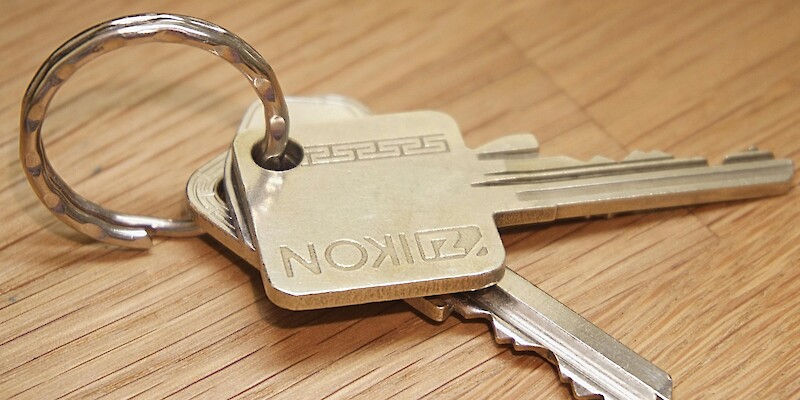When purchasing a property, whether for personal residence or as an investment, it’s important to factor in stamp duty as part of the initial costs. Stamp duty is not applicable in every situation and varies depending on the property's location and value. It’s crucial to review the specific rules and thresholds relevant to your purchase.
What is stamp duty land tax?
Stamp Duty Land Tax (SDLT) is a government fee in England and Northern Ireland, applicable when purchasing a property valued above a certain threshold. Similar taxes exist in the devolved nations. In Scotland, it is known as Land and Buildings Transaction Tax (LBTT), and in Wales, it is called Land Transaction Tax (LTT).
Each region has its own thresholds, regulations, and guidelines regarding liability and payment of these taxes, based on the property's location and value. It is important to review the specific requirements relevant to the area where your property is situated.
How much stamp duty will you pay when buying a residential property?
When purchasing a home to live in, you are liable for Stamp Duty Land Tax (SDLT) in England and Northern Ireland if the property is valued at £250,000 or more. However, first-time buyers may qualify for a discount, or even exemption, on SDLT for their first home, depending on the property's value. Specific thresholds and reliefs are in place to support first-time buyers, so it’s important to confirm eligibility based on the property price.
Keep in mind that stamp duty thresholds in England and Northern Ireland will be changing on 31 March 2025.
The below tables show both the current and new thresholds for England and Northern Ireland:
Current
|
Residential property value |
Stamp Duty Payable (charged at % of property value) |
Payable if first-time buyer |
|
£0-£250,000 |
None |
None |
|
£250,001 - £925,000 |
5% |
5% on any element of property value between £425,000-£625,000 (nothing if lower than £425,000 but 5% on the full value if above £625,001) |
|
£925,001 - £1 million |
10% |
10% |
|
Any amount above £1.5 million |
12% |
12% |
From March 2025
|
Residential property value |
Stamp Duty Payable (charged at % of property value) |
Payable if first-time buyer |
|
£0 - £125,000 |
none |
none |
|
£125,001 - £250,000 |
2% |
none |
|
£250,001 - £925,000 |
5% |
5% on the element of the property value between £300,000 and £500,000 (nothing if below £300,000 but 5% on the full amount if more than £500,000) |
|
£925,001 - £1 million |
10% |
10% |
|
Any amount above £1.5 million |
12% |
12% |
Scotland
In Scotland, when you buy a property over the value of £145,000 you’ll need to pay LBTT . First-time buyers get a slightly higher tax-free threshold of £175,000.
|
Residential property value |
Stamp Duty Payable (charged at % of property value) |
|
£0-£145,000 |
none |
£145,001-£250,000 |
2% (If first-time buyer, only payable on element above £175,000) |
|
£250,001-£325,000 |
5% |
£325,001-£750,000 |
10% |
|
Over £750,000 |
12% |
Wales
In Wales, buying property valued at £225,000 or more will make you liable for LTT. There is no first-time buyer relief offered in Wales.
|
Residential property value |
Stamp Duty Payable (charged at % of property value) |
|
£0-£225,000 |
0%
|
|
£225,001-£400,000 |
6%
|
|
£400,001-£750,000 |
7.5% |
|
£750,001-£1,500,000 |
10% |
|
Over £1,500,000 |
12% |
Stamp duty for buy-to-let properties and second homes
When purchasing an additional residential property in England or Northern Ireland valued above £40,000, you will be liable for a stamp duty surcharge. This applies to buy-to-let properties, holiday homes, and other second homes. In England and Northern Ireland: The surcharge is 5% on top of the standard Stamp Duty rates. For instance, if your second home is valued at £250,000, the total SDLT rate would be 10% (5% standard rate + 5% surcharge).
In Scotland: This surcharge is called the Additional Dwelling Supplement (ADS) and is charged at 6% of the property value on top of the standard Land and Buildings Transaction Tax (LBTT) rates. In Wales: The surcharge for second homes is 4% on top of the standard Land Transaction Tax (LTT) rates. These surcharges are designed to apply to additional properties beyond your primary residence.
Stamp duty when transferring a property
Stamp Duty Land Tax (SDLT) may also be payable when property ownership is transferred without a sale, depending on the specific circumstances. Here are the key considerations:
-
HMRC's Criteria: SDLT is charged on the amount paid for a property or the value of the ‘chargeable consideration’ given.
-
Marrying, Civil Partnership, or Cohabiting: SDLT applies if the chargeable consideration (e.g., cash or other value exchanged) exceeds the current threshold for the property type.
-
Transfers as Gifts: If the property transfer is a gift with no chargeable consideration, SDLT usually does not apply. However, it may be payable if there is an outstanding mortgage that is being assumed.
-
Divorce, Separation, or Ending a Civil Partnership: SDLT is not payable if the transfer is part of a settlement following the end of a marriage or civil partnership.
-
Change in Shared Ownership: For properties owned as joint tenants or tenants in common, SDLT may be due if one party buys out a larger share and the value of that share exceeds the SDLT threshold.
-
Inheritance: No SDLT is payable if the property is inherited under the terms of a will, even if the inheritor takes on an existing mortgage.
-
Transfers to or from a Company: SDLT may be charged on the market value of the property when it is transferred to or from a company, regardless of the consideration given.
Each situation can be complex, so it’s advisable to consult with a property solicitor or tax adviser to ensure compliance with SDLT regulations.
Who is exempt from paying it?
You are not required to pay Stamp Duty Land Tax (SDLT) if you purchase a residential property below the current threshold for your country. The threshold varies depending on factors such as whether you are a first-time buyer or not. In England and Northern Ireland, these thresholds are set to change on 1 April 2025. Additionally, SDLT is not applicable in the following scenarios: If you inherit a property, no matter its value. If you are awarded a property as part of a divorce or civil partnership settlement.
It’s important to check the specific thresholds and exemptions applicable at the time of your purchase.
How to pay your stamp duty bill
Typically, your conveyancing solicitor will handle the payment of Stamp Duty Land Tax (SDLT) on your behalf as part of the property purchase process. However, it is ultimately your responsibility to ensure that the payment has been made. If your solicitor does not complete the payment, you may need to file and pay the SDLT directly to HMRC. It is crucial to confirm this with your solicitor to avoid penalties for late payment.
Frequently Asked Questions
In England, Stamp Duty Land Tax (SDLT) must be paid within 14 days of your mortgage completion date. It is your responsibility to ensure this deadline is met, as failing to do so may result in additional charges or penalties.
In Scotland and Wales, the deadlines are slightly more generous: Scotland: Land and Buildings Transaction Tax (LBTT) must be paid within 30 days of completion. Wales: Land Transaction Tax (LTT) must also be paid within 30 days of completion.
Confirm with your solicitor or conveyancer that payment has been made to avoid any issues.
















